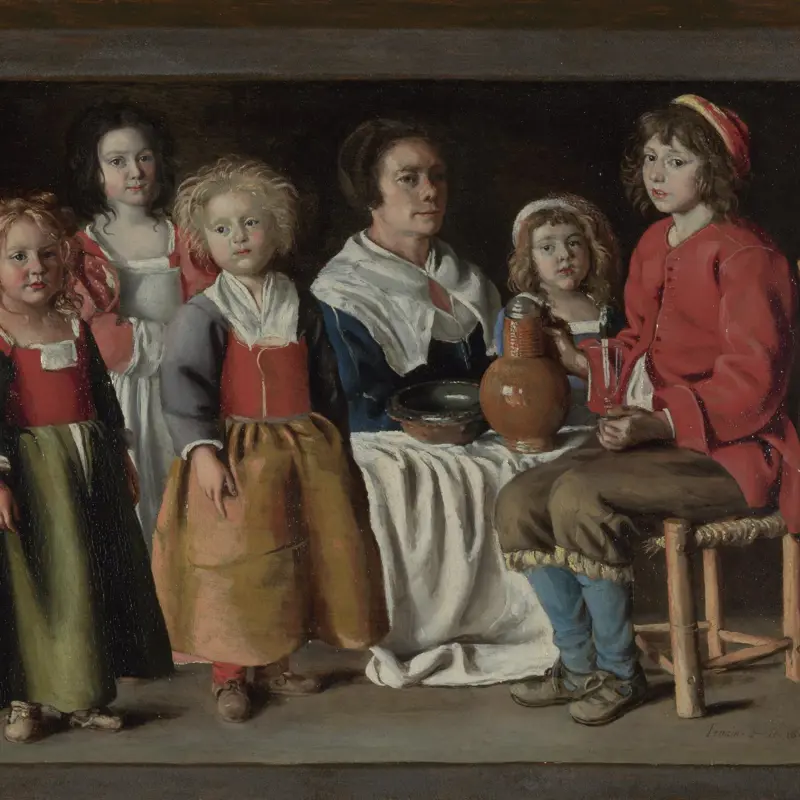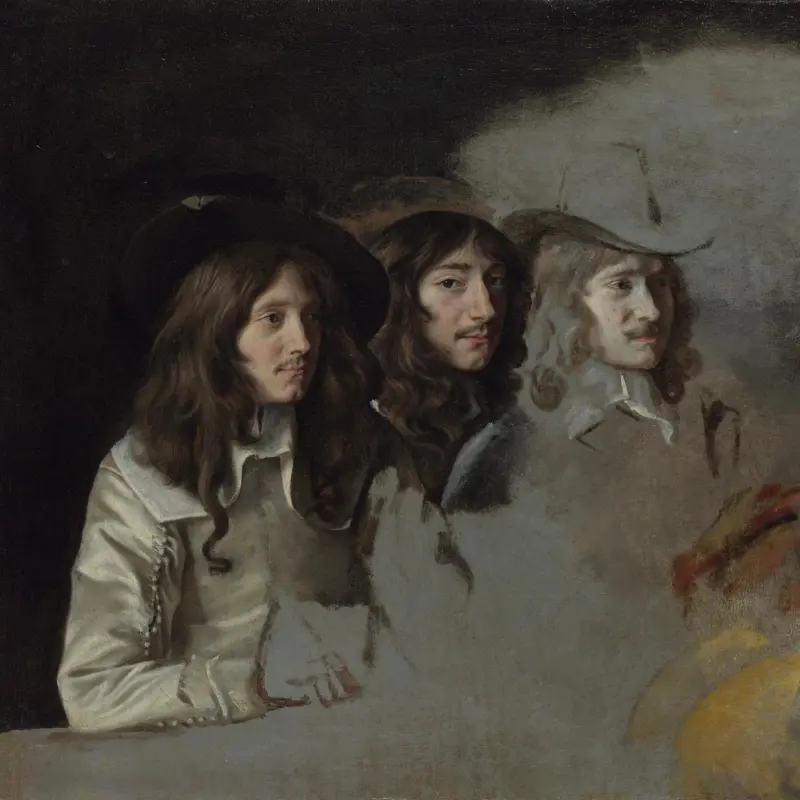The Le Nain Brothers, 'The Adoration of the Shepherds', about 1640
About the work
Overview
A group gathers around a manger to adore the newborn Christ. On the right, the Virgin Mary and Joseph gaze reverently at the infant, alongside two small angels. On the left are two young boys and an old, barefooted man: they are the shepherds mentioned in the Gospel of Luke (2: 8–20). This scene takes place in the ruins of a classical building rather than the stable described in the Bible, symbolising the decline of the old pagan world with the rise of Christianity.
We aren’t sure which of the three Le Nain brothers – Antoine, Louis and Mathieu – painted this picture, but it is one of the greatest produced by them. Made for private devotion in someone’s home, it combines refined elegance with carefully observed naturalistic detail: compare, for example, the beautiful, idealised Virgin with the older shepherd’s tattered clothes and dirty, wrinkled feet.
Key facts
Details
- Full title
- The Adoration of the Shepherds
- Artist
- The Le Nain Brothers
- Artist dates
- Antoine (about 1600 - 1648), Louis (about 1603 - 1648), Mathieu (about 1607 - 1677)
- Date made
- about 1640
- Medium and support
- oil on canvas
- Dimensions
- 109.2 × 138.7 cm
- Acquisition credit
- Bought, 1962
- Inventory number
- NG6331
- Location
- Room 29
- Collection
- Main Collection
- Frame
- 18th-century French Frame
Provenance
Additional information
Text extracted from the ‘Provenance’ section of the catalogue entry in Humphrey Wine, ‘National Gallery Catalogues: The Seventeenth Century French Paintings’, London 2001; for further information, see the full catalogue entry.
Exhibition history
-
2016The Brothers Le Nain: Painters of 17th-Century FranceKimbell Art Museum22 May 2016 - 11 September 2016Legion of Honor (Fine Arts Museums of San Francisco)8 October 2016 - 29 January 2017Musée du Louvre-Lens22 March 2017 - 26 June 2017
Bibliography
-
1965The National Gallery, The National Gallery: June 1962 - December 1964, London 1965
-
2001H. Wine, National Gallery Catalogues: The Seventeenth Century French Paintings, London 2001
-
2001
C. Baker and T. Henry, The National Gallery: Complete Illustrated Catalogue, London 2001
Frame
This is an early eighteenth-century French Regency-period frame, carved from oak. The frame has a cabochon (egg-and-nest) motif on the back edge, with ‘Duc d’Orléans’ reeds on the top edge. Rosettes encased with C-scrolls grace the corners, while the centre cartouches are embellished with the lambrequin motif, named after the decorative drapery from this period. On either side of the cartouches are ‘queue du cochon’ (curled leaf) and rinceaux (branches with foliage). A sanded flat precedes the sight edge, decorated with French acanthus leaves.
Multiple layers of regilding cover the fine lines made by the ‘répareur’.
About this record
If you know more about this work or have spotted an error, please contact us. Please note that exhibition histories are listed from 2009 onwards. Bibliographies may not be complete; more comprehensive information is available in the National Gallery Library.



